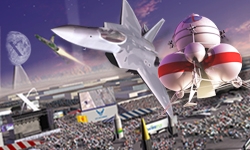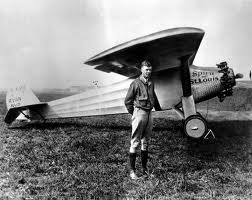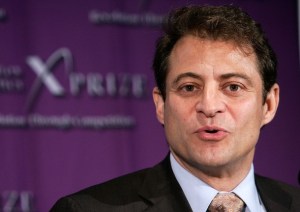 I’ve participated in dozens of business plan competitions over the years. I concluded that they are a lot fun, but that they do little more than educate students on the fundamentals of starting a business. They create a lot of heat and light but hardly any motion. There are few competition winners who have made it big.
I’ve participated in dozens of business plan competitions over the years. I concluded that they are a lot fun, but that they do little more than educate students on the fundamentals of starting a business. They create a lot of heat and light but hardly any motion. There are few competition winners who have made it big.
I spent the weekend, however, participating in a competition that was really different and that promises to change the world. There were so many great ideas that emerged from this that judges said they would fund some of the losers themselves. This was at the X PRIZE Visioneering Workshop, in Beverly Hills, CA. The participants weren’t MBA students; they were a hundred of the greatest engineers, scientists, and thinkers in the world. Many had already built billion-dollar businesses. The attendees included Eric Schmidt (Google), Dean Kamen (Segway inventor), Ratan Tata (Tata Group), Simon Worden (NASA), Aneesh Chopra (U.S. CTO), and Carl Bass (Autodesk)—and some entertainment-industry celebrities such as James Cameron (Avatar, Titanic), Will I Am (Black Eyed Peas), Jim Gianopulos (Fox Studios), and Ali Velshi (CNN). And senior executives of GE, GM, Novartis, Celgene, Shell, Kauffman Foundation, PepsiCo, Qualcomm, and Sprint.
The purpose of the meeting was to brainstorm on what radical innovations can be created over the next two to eight years that will positively affect humanity; to conceive ideas on creating new industries; to challenge the conventional wisdom on what is, and what isn’t, possible. These ideas, documented in the form of a short business plan, will form the basis of new X PRIZE incentive challenges. This is what the X PRIZE Foundation does: it develops ambitious ideas, defines achievable targets, and challenges entrepreneurs to create innovative solutions to implement them. And it offers millions of dollars in bounties to those who succeed.
 The first X PRIZE (called the Ansari X PRIZE) was a space competition, created in 1996, which offered $10 million to the first private organization to launch a re-usable manned spacecraft into space twice within a two-week period. This was won on October 4, 2004—the 47th anniversary of the Sputnik 1 launch. The X PRIZE concept is modeled on early-20th-century aviation prizes—which were won by people such as Charles Lindbergh. These prizes spurred the development of the airline industry. In the same way, the Ansari X PRIZE seeded today’s private spaceflight industry—which has already had $1.5 billion dollars invested in it.
The first X PRIZE (called the Ansari X PRIZE) was a space competition, created in 1996, which offered $10 million to the first private organization to launch a re-usable manned spacecraft into space twice within a two-week period. This was won on October 4, 2004—the 47th anniversary of the Sputnik 1 launch. The X PRIZE concept is modeled on early-20th-century aviation prizes—which were won by people such as Charles Lindbergh. These prizes spurred the development of the airline industry. In the same way, the Ansari X PRIZE seeded today’s private spaceflight industry—which has already had $1.5 billion dollars invested in it.
 There are several X PRIZE competitions in progress, such as the $30 million Google Lunar X PRIZE—which will reward anyone who can send a robot to the Moon that travels at least 500 meters and transmits video, images, and data back to the Earth. The Wendy Schmidt Oil Cleanup X CHALLENGE is offering $1.4 million to anyone who can speed the pace of cleaning up seawater surface oil resulting from spillage from ocean platforms, tankers, and other sources. And the Archon Genomics X PRIZE is offering $10 million for a device that dramatically reduces the time and cost of sequencing the human genome.
There are several X PRIZE competitions in progress, such as the $30 million Google Lunar X PRIZE—which will reward anyone who can send a robot to the Moon that travels at least 500 meters and transmits video, images, and data back to the Earth. The Wendy Schmidt Oil Cleanup X CHALLENGE is offering $1.4 million to anyone who can speed the pace of cleaning up seawater surface oil resulting from spillage from ocean platforms, tankers, and other sources. And the Archon Genomics X PRIZE is offering $10 million for a device that dramatically reduces the time and cost of sequencing the human genome.
 I saw at first hand how productive great minds can be in conceptualizing radical breakthroughs. I was part of a team that fleshed out an idea that former eBay president Jeff Skoll had had.
I saw at first hand how productive great minds can be in conceptualizing radical breakthroughs. I was part of a team that fleshed out an idea that former eBay president Jeff Skoll had had.
More than a billion people in the developing world face shortages of drinking water. Given the rate at which water tables are being depleted, the situation is becoming dire. Jeff’s idea was to develop a small, affordable device that works without the electricity grid (many villages in the developing world don’t have access to electricity) and extracts water from human and other organic waste.
 The scientists on our team said this was not only feasible but could also generate electricity as a by-product—enough to power small motors, lamps, and cell-phone chargers. Technology already exists to extract water and to generate electricity from organic waste; but it is expensive and works only in industrial volumes. There is, however, no technical barrier to developing this on a small scale and for the devices to be jump-started by solar panels. It is conceivable that the cost can be brought down to less than $100 and that one device can service an entire village. Our team’s recommendation was that the X PRIZE Foundation offer a million-dollar prize for the development of this technology, with the caveat that it has to be operational in at least 10 villages over a period of one year and be assembled and maintained by the villagers.
The scientists on our team said this was not only feasible but could also generate electricity as a by-product—enough to power small motors, lamps, and cell-phone chargers. Technology already exists to extract water and to generate electricity from organic waste; but it is expensive and works only in industrial volumes. There is, however, no technical barrier to developing this on a small scale and for the devices to be jump-started by solar panels. It is conceivable that the cost can be brought down to less than $100 and that one device can service an entire village. Our team’s recommendation was that the X PRIZE Foundation offer a million-dollar prize for the development of this technology, with the caveat that it has to be operational in at least 10 villages over a period of one year and be assembled and maintained by the villagers.
Another team proposed the development of a “Digital Doctor”. This would comprise an expert system, running on a mobile computer or a tablet device, that can be operated by a minimally educated, minimally trained person. Its goal is to accurately diagnose the most common diseases (e.g. respiratory diseases, water-borne illnesses) that are prevalent in different regions of the world.
There were dozens of great ideas. Some were really far out, such as the concept of a point-to-point transportation system that would shuttle people from, say, Manhattan to Newark airport—through the air. Others were wishful, like an advanced jet that can get from Los Angeles to Sydney in four hours by taking an orbital route. Some were low-tech, like creating a recipe book for autocratic governments to transform into democracies. But all were truly out–of-the-box and revolutionary.
If the X PRIZE Foundation publishes the ideas, why are incentives necessary, you may ask? After all, aren’t there enough entrepreneurs out there who are motivated to solve the world’s problems and who can see the financial advantage? And don’t venture capitalists see the big opportunities?
 As X PRIZE founder Peter Diamandis explains, unlike venture capital, which backs one possible solution, incentive competitions inspire a multitude of solutions; they build robust industries and ecosystems. The competitions do this by setting a target and goal that multiple players strive toward. And, unlike traditional philanthropy, which often spends only cents in the dollar toward a desired outcome, incentive competitions create tremendous leverage, with the prize purse attracting operating capital, and teams spending multiples of the prize purse. By setting an audacious but achievable target and vetting that target through experts, incentive competitions offer credibility and “air cover” for entrepreneurs, innovators, and inventors who want to pursue a path that would otherwise be considered too risky, Diamandis adds.
As X PRIZE founder Peter Diamandis explains, unlike venture capital, which backs one possible solution, incentive competitions inspire a multitude of solutions; they build robust industries and ecosystems. The competitions do this by setting a target and goal that multiple players strive toward. And, unlike traditional philanthropy, which often spends only cents in the dollar toward a desired outcome, incentive competitions create tremendous leverage, with the prize purse attracting operating capital, and teams spending multiples of the prize purse. By setting an audacious but achievable target and vetting that target through experts, incentive competitions offer credibility and “air cover” for entrepreneurs, innovators, and inventors who want to pursue a path that would otherwise be considered too risky, Diamandis adds.
It is very possible that some of the of the technologies we discussed over the weekend will come to fruition and change the lives of billions; that investments of a few million dollars will do more good for the world than the billions that are invested in the me-too social media technologies that Silicon Valley is so excited about. My hope is that more of world’s greatest minds do what some did last weekend: brainstorm to save our civilization.
Editor’s note: Vivek Wadhwa is an entrepreneur turned academic. He is a Faculty and Advisor, Singularity University, Visiting Scholar at UC-Berkeley, Senior Research Associate at Harvard Law School, Director of Research at the Center for Entrepreneurship and Research Commercialization at Duke University, and Distinguished Visiting Scholar at The Halle Institute for Global Learning at Emory University. You can follow him on Twitter at @wadhwa and find his research at www.wadhwa.com.